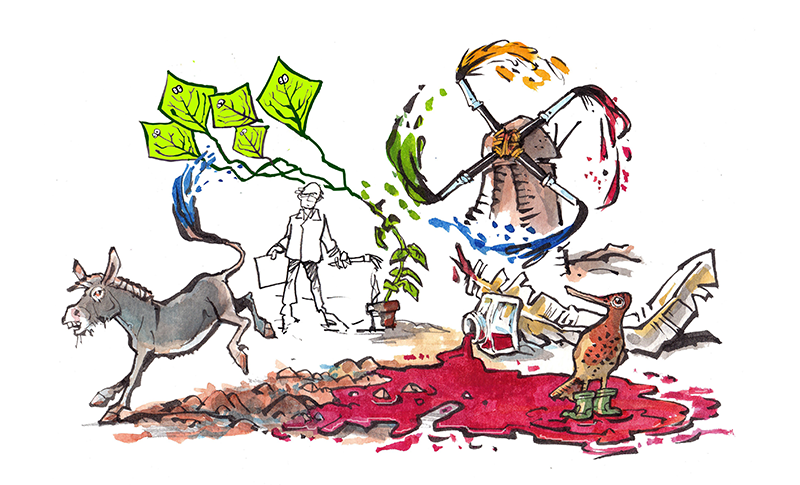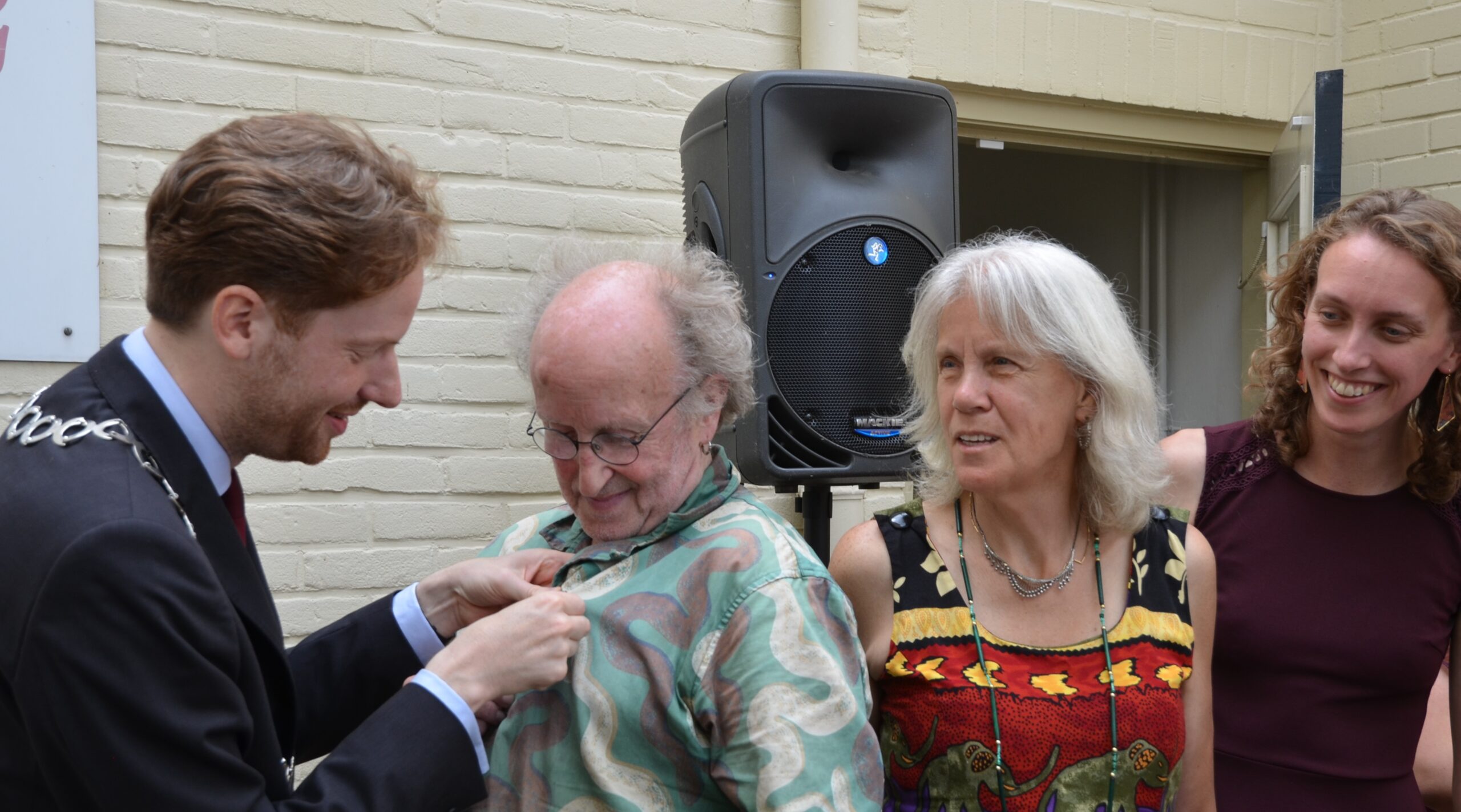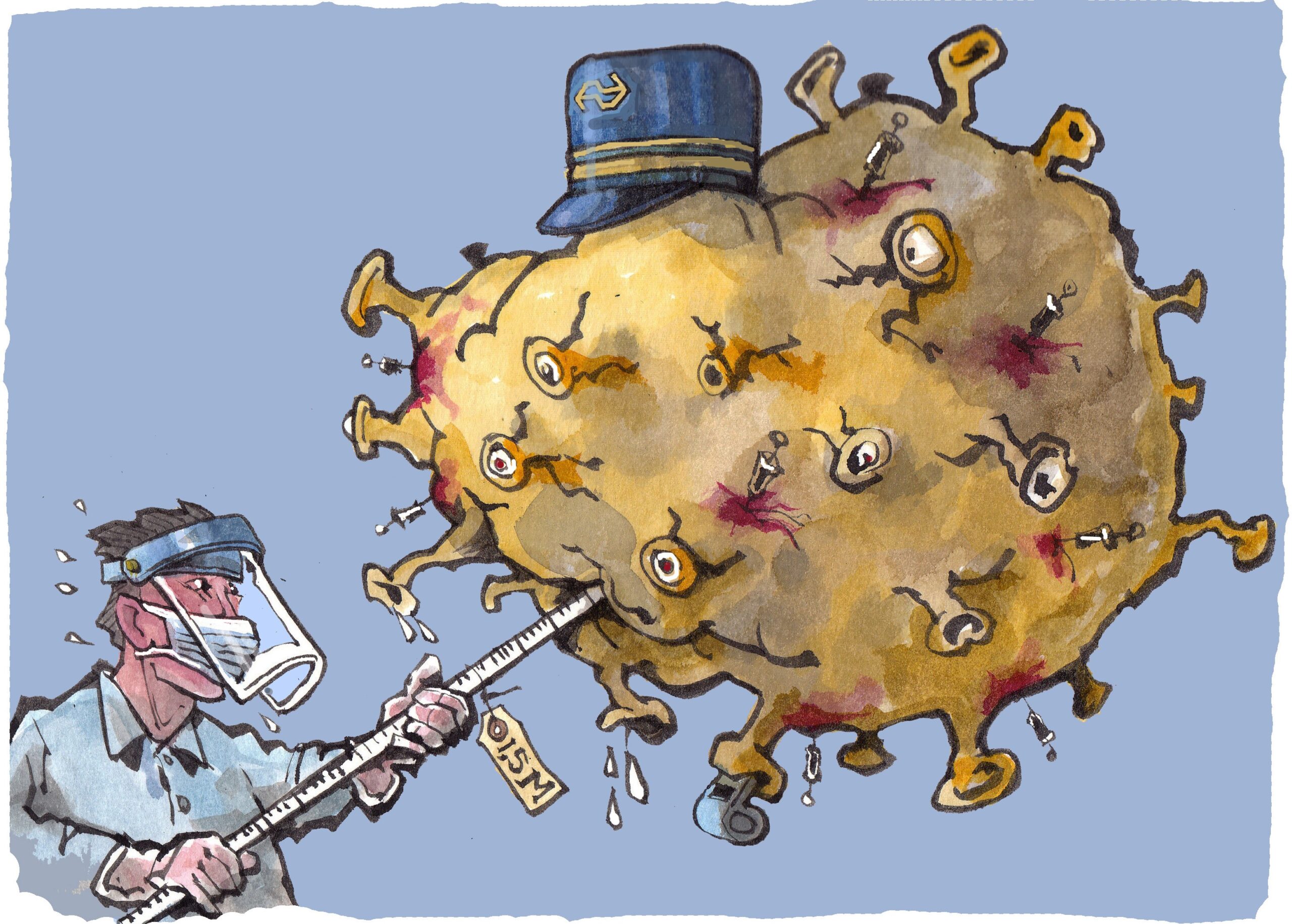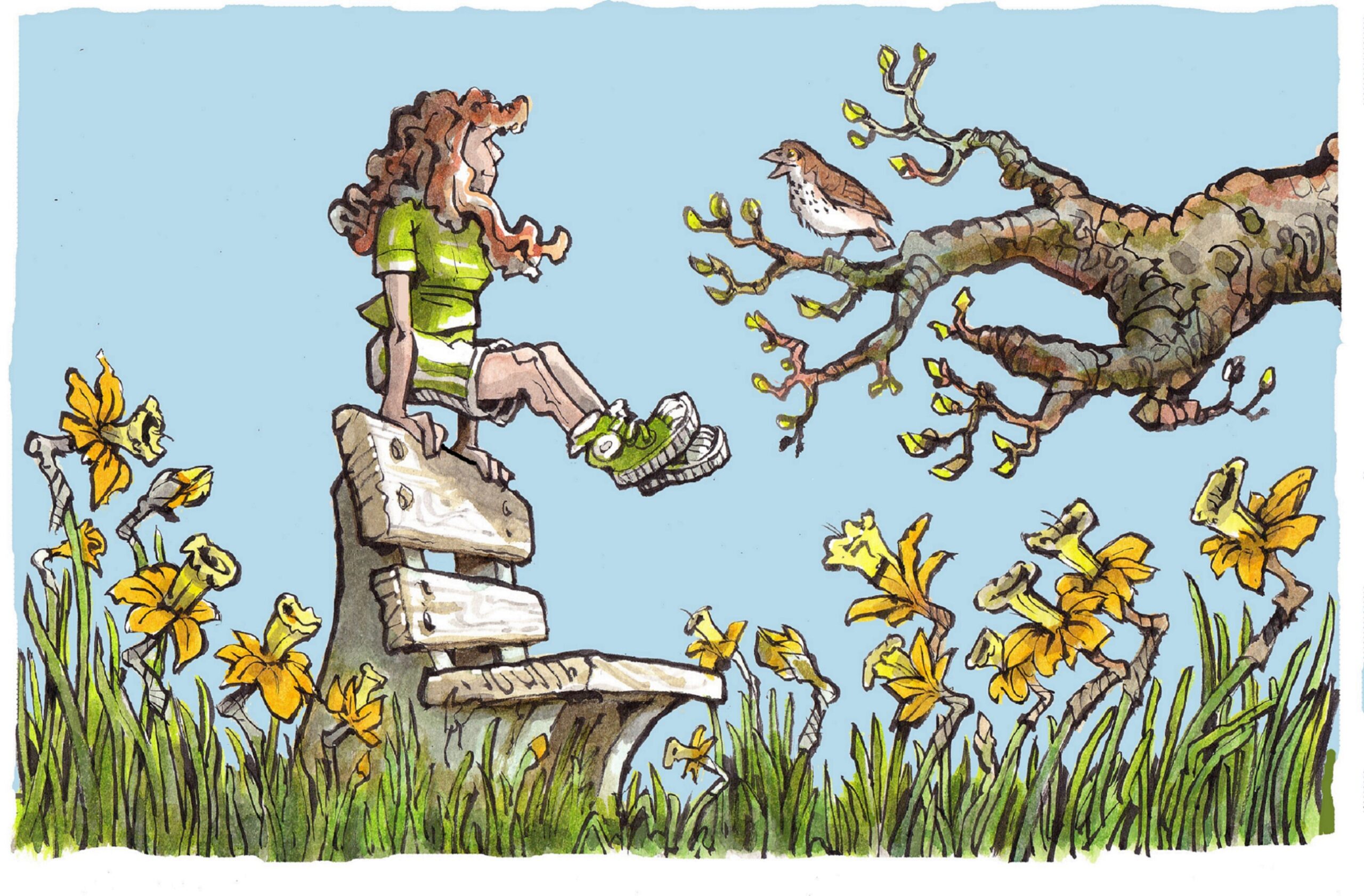Henk van Ruitenbeek has been illustrating Wageningen University’s magazine for nearly 40 years, for the last decade or so as the illustrator for the Typical Dutch feature. His last contribution is published in this last Resource of the academic year. Editor Albert Sikkema asked him what is ‘typical Henk’.
He is 67 years old now but without batting an eyelid he says, ‘I think I’m still getting better. I mean, technically better, that I put the idea on paper better or more sharply. Or I’ve become more tech-savvy, that might be it. I’m self-taught – when I was a student here I used to draw a bit and then I was asked to send a bunch of pencil drawings to the editors. The designer liked them, the pencil style especially I think, so I was allowed to illustrate articles. I had a limited repertoire to start with, but then I had to illustrate subjects I knew little about and I had to familiarize myself with those too. And I started studying, getting hold of books to learn more about drawing techniques and drawing in perspective better.
I don’t want to copy things or take well-trodden paths
I also gave my drawings names and evaluated them. Did a drawing hit the nail on the head, or was it hard to understand? ‘You see, I have my own opinions of course. So I start drawing with an opinion on the topic, but if I see that I’m too influenced by that opinion, I think, wait a minute, this is a bit too easy, so I’m going to draw something else. Or I’m seduced by a particular image. I might read a story and feel there must be a donkey in my illustration. Then on second thoughts, I wonder what that donkey has to do with the subject. At other times I just want to introduce an element of beauty – I feel that particularly with ugly subjects.’
‘The worst thing the editors can do to me is to get me to illustrate an article because they can’t come up with a photo to go with it. It’s like: this is abstract, that’s one for an illustration. That happens quite a lot. I’m not complaining, and I’ve never said, “I can’t do anything with this” because that would feel like admitting defeat. So I would just set to work on it. Articles about education policy, reorganizations and IT developments were hard, with lots of obscure jargon. You have to read them three times to get the point. You can poke fun at the jargon but that’s amusing once and doesn’t really get you anywhere.’
‘I write too, a spoken column for a musical salon in Wageningen, and plays. In the texts I write for youth theatres, I like to use a few nice words that the young people don’t know yet, and that I don’t use often myself. A new word to savour, as it were.
Sometimes I just want to introduce an element of beauty, especially with ugly subjects
That’s what I want for my drawings too. I don’t like clichés. I don’t want to copy things or take well-trodden paths, but nor do I want to draw a cartoon showing real people. But perhaps I don’t want to do that because I’m not good at it. I distrust my own motives.’
‘I get quite a lot of response to my illustrations for Typical Dutch, especially from WUR staff and Wageningen residents who don’t work at WUR – they know my drawings too. I enjoy receiving a compliment and I pay more compliments myself these days too. A compliment can make your day.’
‘I stopped signing my drawings years ago. It just happened without my noticing. It’s not necessary anymore – the drawing is my signature.’

 Henk van Ruitenbeek: ‘Sometimes I’m seduced by an image. I might read a story and feel there must be a donkey in my illustration. Then on second thoughts, I wonder what that donkey has to do with the subject.’ Illustration: Henk van Ruitenbeek
Henk van Ruitenbeek: ‘Sometimes I’m seduced by an image. I might read a story and feel there must be a donkey in my illustration. Then on second thoughts, I wonder what that donkey has to do with the subject.’ Illustration: Henk van Ruitenbeek 

